The Forest Society recently hosted a public timber harvest tour on Silver Mountain.
- Tags:
- Forestry,
- Education,
- Working Forests
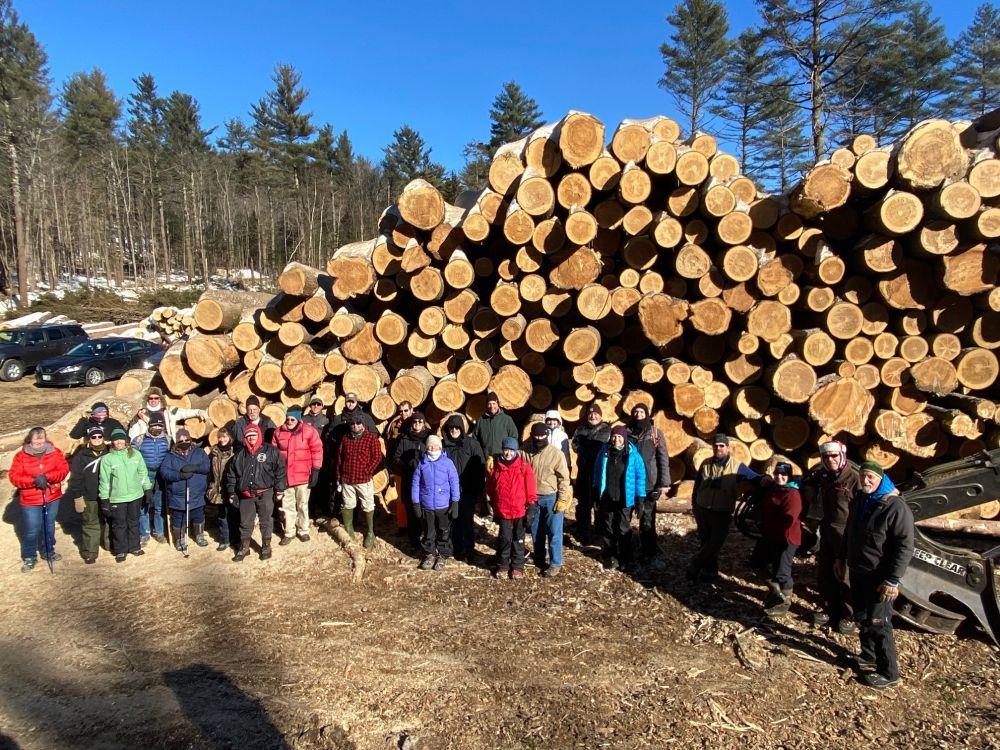
Tour participants in Lempster, NH pose in front of the log pile on landing.
The Forest Society recently hosted a public timber harvest tour on Silver Mountain at the 1,826-acre Ashuelot River Headwaters Forest in Lempster. Recent seasonably cold weather has made January 2022 ideal for timber harvest operations taking place on Forest Society lands. An active timber harvest provides an ideal window of opportunity for public outreach and education to share why and how the Forest Society manages forestland via periodic timber harvesting operations.
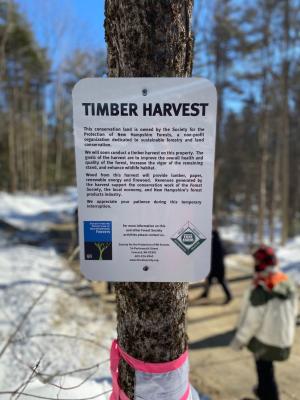
The morning low temperature of -14 degrees Farenheit warmed to the mid-20s by noon under perfectly blue skies for the walking tour for nearly 30 participants who arrived to learn about the timber harvest goals and implementation firsthand.
Forest Society Managing Forester Wendy Weisiger and Field Forester Steve Junkin, along with Meadowsend Timberlands Consulting Forester Jeremy Turner and UNH Cooperative Extension Sullivan County Forest Educator Dode Gladders, led the public timber harvest tour.
Carefully-planned, sustainable timber harvesting allows the Forest Society to accomplish multiple forestry goals including improvement of the residual growing stands of trees, release of high quality future crop trees and allocating sunlight to favor regeneration of specific tree species. Enhancement and protection of non-timber resources includes the protection of wildlife habitat features like standing dead snag trees or stimulating growth of fruiting shrubs and creation of early successional habitats for wildlife. The harvest plan and skid trail layout also addresses protection of water quality and protection of cultural features including historic cellars, stonewalls, and recreational trails.
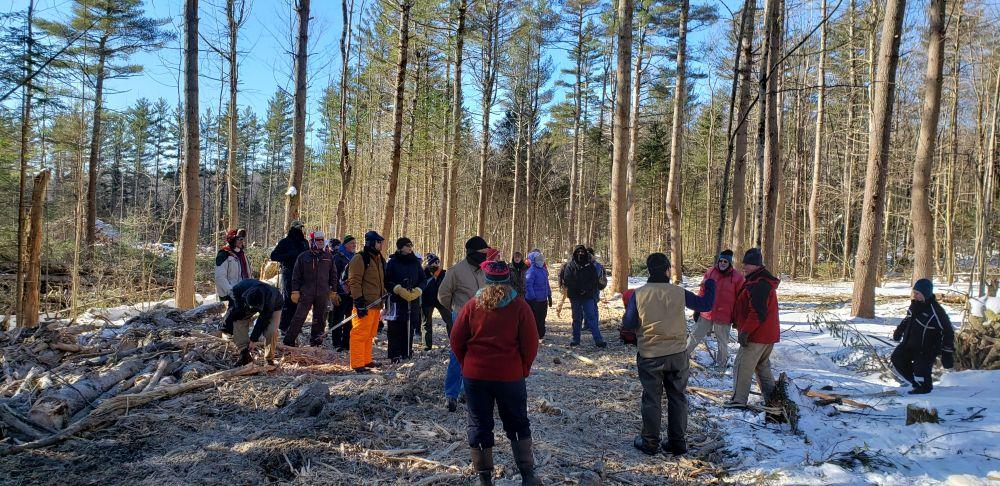
The Ashuelot River Forest includes a popular local hiking trail to views and blueberry picking from the open summit of Silver Mountain. South Road is not maintained for winter travel and provides a link in the local snowmobile trail corridor. We encountered snowmobile traffic - smaller groups passing through and clearly enjoying excellent riding conditions.
The planned harvest is one component of a comprehensive, long-term forest management plan for the Ashuelot River Headwaters property.
The forestry team leading the the tour pointed out the methodology for communication between the foresters and the logging contractors via blue paint marks on trees to be cut or on wildlife trees and standing dead snags to be protected. Pink flag ribbons in the understory delineate resource concerns such as a seasonal stream crossing or advanced regeneration of futue crop trees to be protected when cutting occurs nearby.
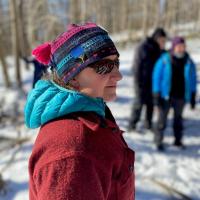
The logging operation on Silver Mountain began shortly after Christmas 2021 and is now completed.
A larger opening higher on Silver Mountain removed non-native Norway spruce, a plantation established in former pastures. The Norway spruce had reached maturity and was in decline. The goal here is to regenerate sun-loving "pioneer" tree species including white birch, aspen, cherry, white pine, balsam fir and to stimulate the growth of fruting shurbs including blueberries for wildlife. On lower slopes where the tour was conducted, white pines were thinned via individual tree or small group selection to remove white pine to optimize spacing and remove lower quality stems. Most of the softwood at Silver Mountain were severely impacted 24 years ago by the January 1998 ice storm which inflicted extensive crown damage.
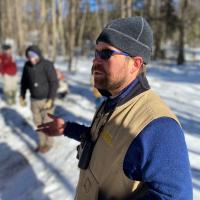
Forester Jeremy Turner described the '98 ice storm as the most significant forest disturbance of the past century. All of the property now comprising the Ashuelot River Headwaters had been cleared for agriculture in the 1800's. Upper slopes with thin soil were pastures for livestock and lower areas included farms with hay fields and areas tilled areas for growing field crops.
The legacy of the agricultural era includes the white pine and spruce which established in sunny former pastures and farm fields by the 1900's. Beneath the "old field" pioneers, the conifers, shade has favored regeneration of northern hardwoods: beech, yellow birch, sugar maple, white ash and red spruce.
Beyond the agricultural and forest history of the tract, participants learned about future potential issues associated with invasive plants or insects.
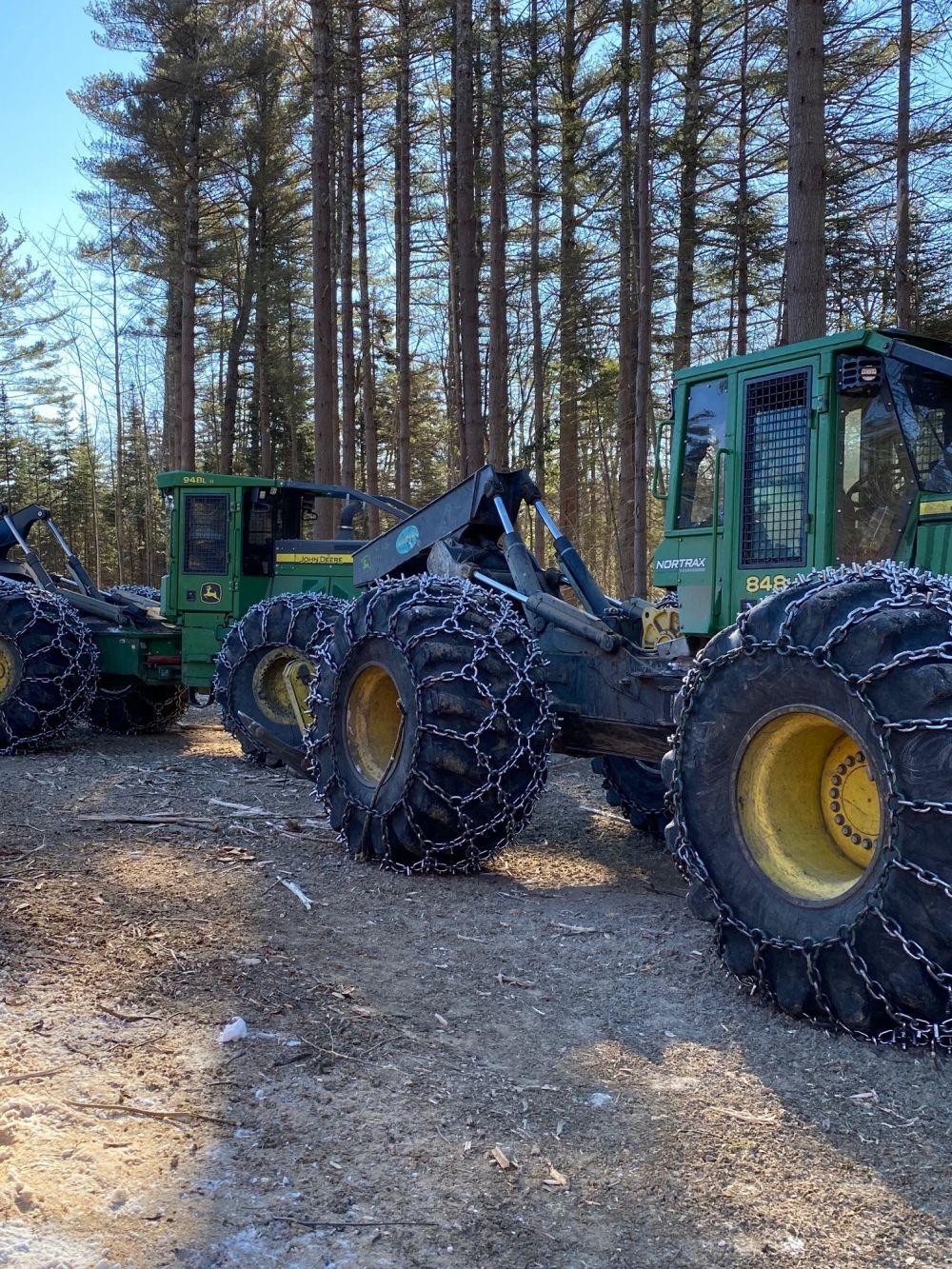
Pockets of enriched soil growing sugar maple and white ash will change as the invasive emerald ash borer beetles kill the ash. County Forester Dode Gladders shared how the EAB expanded north and west into Sullivan and Grafton Counties and where impacts are often seen along public roads. Eventually it is expected that the EAB will result in 100% mortality of white ash. Trees growing outside the relatively enriched, moist soil sites favored by ash will likely experience the earliest mortality due to other health stressors. The early signs of EAB seen not far from Silver Mountain along Sand Pond Road include "blonding" of trunks where woodpeckers probe ash bark to obtain the larvae already established and feeding on the cambium beneath the bark.
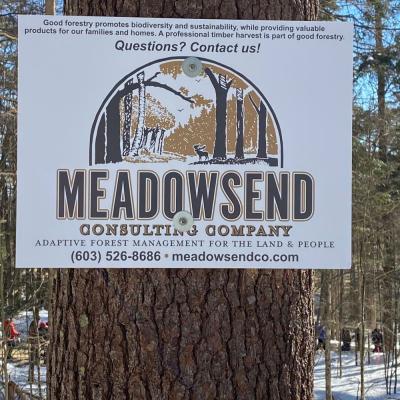

Participants on the Forest Society sponsored Timber Harvest Tour had a rare and unique opportunity to learn about forestry firsthand from forest resource professionals.
The Forest Society is grateful to Meadowsend Consulting Forester Jeremy Turner and to UNH Cooperative Extension Sullivan County Forest Resources Educator Dode Gladders for their time and expertise to support public education and help us to offer a good experience.
We are also grateful to those who braved the intially cold temperatures to join the tour!
Learn more
- If you have questions about management plans, harvesting, or hiring a forester for your own property please visit our resources page to learn more.
- Find out more about why we cut trees for conservation in a StoryMap.
- See a map of where timber harvests have recently taken place and learn more about the process.
- If you missed this tour, check our events calendar for upcoming timber harvest tours, when you can see a timber harvest in action.
- Visit the Ashuelot River Headwaters Forest.
